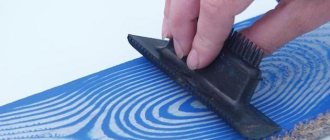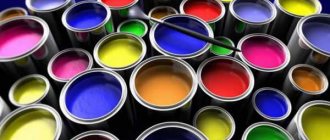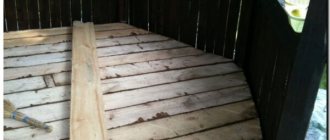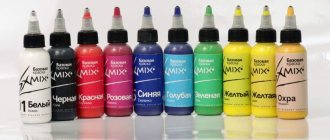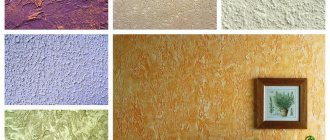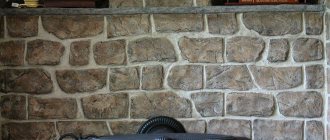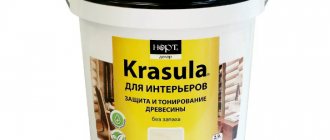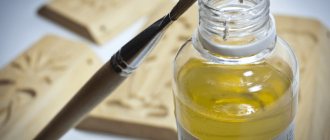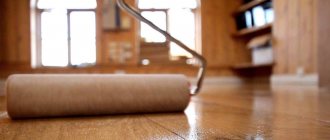Quite often, when carrying out restoration work on wooden structures, a special product called drying oil is used. It is a transparent liquid of various colors: from yellow to cherry. The substance is based on vegetable oils that have been heat-treated in advance. Wooden surfaces are impregnated with drying oil and metal structures are wetted. When applied to a coating area, it forms a thin layer, which hardens into a protective film. This surface layer protects the structure of the building material from the negative effects of fungus and mold. The product can be used as an ignition, as well as in the form of an effective impregnation, a base for applying paints and varnishes
Types of drying oil
They contain polymers derived from petroleum products.
However, drying oil is not all natural. “Fighting” for market share, the oily mixture has become multifaceted. Let's look at modern types: Composite drying oil. Its composition is dominated by petroleum-polymer resins. Their evaporation is the cause of the strong smell of drying oil and, at the same time, harm to the body. But composite mixtures are available and compete in price with alternative ones.
Only the latter have GOST standards. There is no state standard for composite drying oil. Manufacturers rely only on technical specifications. Therefore, the “recipe” of mixtures in the category is “a pig in a poke.”
To prevent it from “scratching”, composite drying oils are prohibited from being used indoors. The compositions are intended exclusively for outdoor work, for example, protecting courtyard gazebos.
Oxol. In contrast to the combined drying oil, it is manufactured according to GOST with the number “190-78”. Vegetable oils in mixtures 55%. Most formulations, however, include sunflower. Flaxseed oil-oxol occupies only 25% of the total output.
About 40% white spirit and 5-10% drier are added to the oils in the mixtures. The latter concept hides metal salts that accelerate the hardening of drying oil. In other words, Oxol is an improved version of the usual mixture of oils.
The new product dries faster, is easier to apply, and costs less. The smell of Oxol is a little sharper than that of the natural one. The solvent is white spirit. It contains aliphatic and aromatic hydrocarbons. That is, there is an oil component in Oksol.
Natural drying oil. It consists of 97% vegetable oils. Use flaxseed, sunflower or hemp pomace. There is only 3% of drier in mixtures of the group. Proportions are regulated by GOST.
Drying oil “submits” to the regulations numbered “7931-76”. It also spells out restrictions on the use of natural mixtures. They are suitable only for interior work.
Let's return to the discussion of synthetic drying oil. It has subspecies, just like the natural one. Not only resins are used as composites, but also naphthenic acid salts and shale oil.
Therefore, polydiene, ethylene, synthol and shale drying oils are found on store shelves. Only the latter provides a weather-resistant film. We are talking about a coating that can withstand aggressive environments.
Maintaining aesthetics and performance characteristics. Therefore, it is slate drying oil that is most suitable for outdoor work, although it is not natural.
Specifics and disadvantages of drying oil
Drying oil
is a film-forming liquid that consists of sediments of vegetable oil (linseed, hemp, sunflower, mulberry, etc.), which is processed in a special way (overheating or oxidation).
And the solvents and driers in its composition are similar to oil-based paints, varnishes, primer mixtures and putties. In other words, oil
as a facing mixture can be used as any lubricant or coloring raw material.
Drying oil
considered as a coloring and impregnating agent
During the years of the Soviet Union, paint
oil-based, drying-based paint was perhaps the only simple means of painting surfaces. It was applied to almost everything: floors, walls, ceilings, doors, windows and even furniture. When removing worn-out wallpaper layer by layer, old tiles in the bathroom or worn-out linoleum, you will most likely come across an oiled surface. Previously, not a single repair could be done without it.
With the appearance of new paint and varnish mixtures on the shelves of building materials stores, drying oil began to be used only for puttying purposes in order to give the pore structure of the material integrity and protect it from moisture. Due to the viscous composition of drying oil
has remarkable filling capacity, which significantly reduces its consumption. Another area of its use is painting metal surfaces and ceilings and walls in service areas (toilet, locker room, industrial kitchen) that have hoods. Moreover, it is used to prime concrete surfaces and refinish wood in external work.
Despite all its advantages, drying oil has a number of significant disadvantages, which are well known to those who have at least once tried to apply another paint and varnish substance to it without preparatory treatment. Among the obvious disadvantages it is necessary to highlight:
- low adhesion (adhesion) compared to other painting means, thanks to this, even very expensive paint will “peel off” in a short time;
- a strong aroma that, neither during nor after it, never completely evaporates and creates a stuffy, unpleasant atmosphere in a closed room;
- slow drying, from a couple of hours to a couple of weeks, it all depends on the type and composition (the fastest is real, and the longest is artificial);
- fire and explosion hazard due to the presence of flammable solvents in the composition;
- confusion to use, since it is necessary to work with it only in a warm room (more than 20 degrees), having warmed the mixture in advance;
- fragility.
It is not recommended to paint with inexpensive drying oil; it contains a number of negative qualities
It should be noted that all of the negative factors listed above are mainly characteristic of poor, cheap drying oil. Excellent coverage only partially owns them.
It seems simply unrealistic to paint a surface soaked with drying oil again. But the situation is not as dire as it seems at first glance. The main thing is to choose the right tools and paint.
Operating principle
Many vegetable oils, when exposed to air, under the influence of oxygen, light and heat, thicken, and in a thin layer they “dry out” (polymerize), turning into a semi-solid mass. This characteristic property is inherent in those vegetable oils that contain polyunsaturated fatty acids, in particular linoleic and linolenic acids. The more glycerides of unsaturated fatty acids in the oil and the higher its iodine value, the greater the drying ability of the oil. The oils that have the highest content of glycerides of linolenic and linoleic acids are: flaxseed oil - with up to 80% content (iodine number 175-204) and hemp oil - with up to 70% content (iodine number 145-167). Other oils, such as sunflower, poppy, walnut, containing from 30 to 50% linolenic acid glycerides, dry out weaker and more slowly. Vegetable oils: rapeseed oil, olive oil (iodine number 75–94), etc., containing only traces of linolenic acid, do not have the ability to dry out (however, olive oil thickens). Castor oil does not dry out or thicken. The iodine number of the oil decreases as it dries. Mineral oils do not contain unsaturated fatty acids, and therefore are not subject to polymerization in air (do not dry out).
Vegetable oil in its natural form, even with a high content of linolenic acid, oxidizes extremely slowly. To reduce drying time, the oil is subjected to heat treatment with the addition of metal compounds (driers). When heated, substances that slow down hardening decompose in the oil, and metal salts provide faster oxidation. In this way, drying oils are obtained - compositions that, within 6-36 hours (depending on the composition, preparation technology and additives used) after application to the surface, turn into a hard, elastic film. Most modern drying oils have a drying time of about a day.
Replacement of drying oil
If you don’t have drying oil on hand, the surface can be treated with a casein solution. Such a composition will be cheaper than factory impregnation, and its properties are no worse. In addition, the casein solution dries much faster.
To prepare it you will need 20 parts of casein, 3 parts of soap solution and 10 parts of slaked lime. Mix the ingredients thoroughly and add 7 parts of turpentine. The consistency of the solution should resemble thick drying oil. If sediment appears at the bottom of the container, add a little ammonia to the composition.
Drying oil is an excellent replacement for more modern and expensive methods of impregnating and priming wood. However, do not forget that not all types of this type of impregnation are suitable for use in residential premises.
It is no secret that wooden surfaces treated with varnish or paint have a significant disadvantage - they become cold and lifeless.
If you intend to preserve the beauty of texture, warmth and energy, we recommend that you pay attention to such a material for wood processing as drying oil
Saving Tips
Prices for high-quality drying oil can be expensive. Therefore, in order to save product, you can resort to making it yourself. The components are inexpensive, you just need to spend time on the cooking process itself. And be careful with hot oil. The cooking steps were described above. You can also resort to diluting the composition, although this may reduce the resulting effect.
You can resort to diluting the composition, although this may reduce the resulting effect.
Is it necessary to dry wood before painting? The answer is yes, if certain types of coloring compounds are used. Drying oil can be an excellent protective agent for wooden surfaces; natural compositions are suitable for treating surfaces inside the house. It is important to choose quality products.
Varieties of drying oils
A hundred years ago, drying oils were divided only by the type of natural oil from which they were made; now this area occupies no more than 30–40% of the total market, and semi-synthetic and synthetic compositions predominate on the market. In general, drying oils are divided into 4 types:
- Natural compositions;
- Semi-natural compositions;
- Combined formulations;
- Synthetic compounds.
Each composition was developed for its own, sometimes narrowly targeted purposes, so it is not correct to talk about good or bad drying oil
Natural compositions
Basically, drying oil is made from 3 types of oil - linseed, hemp and sunflower. Other types of natural oils are used extremely rarely; special formulations are often made from them for narrowly targeted purposes. All natural drying oils are guided by a single GOST 7931-76.
| Photo | Characteristics |
| Flaxseed oil. Compositions based on natural linseed oil are considered to be of the highest quality. There is nothing superfluous here, just boiled oil and a small percentage of drier. · Used as a primer when finishing critical areas or processing expensive wood; · Light paints, putties and putties are made from linseed oil; · Its price is high, so this drying oil is not used for exterior woodwork - it is simply impractical. | |
| Hemp drying oil. Compositions based on hemp oil are also of high quality; in fact, the only drawback of hemp oil is its dark color; accordingly, only dark paints, putties and primers can be made from it. | |
| Sunflower oil drying oil. Sunflower drying oil is cheaper than flax and hemp, plus it has high elasticity. But these compositions take one and a half times longer to dry, and most importantly, the strength and water resistance of such drying oil is lower than that of other natural counterparts. |
Semi-natural compounds, oxols
Semi-natural drying oils are called oxols; they are made according to GOST 190-78. According to the rules, 55% is taken up by natural oil, 40% goes to the solvent (white spirit or nefras) and 5% to the dryer.
Oxols are considered universal compositions and can be used both for wood processing and for application to concrete or metal
There are 2 types of oxols, they are labeled as “B” and “PV”. Drying oil marked “B” is made from natural oil with the addition of a solvent and drier, and compositions marked “PV” also contain petrochemical additives that enhance certain characteristics.
It is not recommended to use oxols for treating wet rooms, for example, baths, but they are excellent for protecting wood, fiberboard and chipboard in dry rooms, plus oxols dry faster than natural compounds. The mechanical strength here is average, so it is not advisable to treat floors with oxols.
Oxols are an order of magnitude cheaper than natural types of drying oil
Combined formulations
Combined drying oils are regulated according to GOST 19007. They differ from oxols in the lower percentage of solvent in the composition, often this figure does not exceed 30%. Combined drying oils contain more modifiers and fewer toxic additives.
Combined types of drying oil are more focused on the preparation of paints and other compositions
Synthetic compounds
As the name implies, synthetic formulations are made based on artificial materials. For their production, oil and coal are used. Plus, synthetic drying oils are used as a by-product in the production of artificial types of rubber.
A distinctive feature of these compounds is their dark color and pungent chemical odor. Often, such drying oil is used to make putties for facade work. Synthetics cannot be used indoors, firstly, the smell practically does not dissipate, and secondly, there is a risk of poisoning for people.
It is highly undesirable to use polymer-based compositions for indoor work.
Alkyd drying oil is considered the only relatively high-quality polymer composition; up to 30% natural oils can be added to it. But it is not advisable to use these drying oils for interior work.
How to do it yourself?
In the absence of factory products, quite high-quality drying oil is often made at home from sunflower oil. To obtain a product based on flaxseed oil, you will need to heat it slowly, until the water evaporates, but without warming it above 160 degrees. The cooking time is 4 hours; it is not advisable to cook a large amount of oil at the same time. Filling the vessel halfway provides increased fire protection and significant productivity.
When foam appears, you can introduce the drier in small portions - only 0.03 - 0.04 kg per 1 liter of oil. The subsequent cooking time at 200 degrees reaches 180 minutes. The readiness of the solution is assessed by the complete transparency of a drop of the mixture placed on a clean thin glass. The drying oil should be cooled slowly at room temperature. Drying agent is also sometimes made with your own hands: 20 parts of rosin are combined with 1 part of manganese peroxide, and the rosin is first heated to 150 degrees.
To learn how to use drying oil correctly, watch the following video.
Types of drying oil
All existing types of drying oil can be divided into the following categories:
- natural;
- semi-natural;
- combined;
- synthetic.
Natural types are made from oils of natural origin. Most often, the basis of natural impregnation is flax oil, although hemp or sunflower oil is also used. In natural solutions, a very small proportion of chemical components is acceptable. A desiccant is added to the composition - a substance that acts as a drying catalyst. Metal compounds - cobalt, manganese, lead, iron, etc. - are used as driers.
Natural impregnations are good, but quite expensive, and it is not practical to use them for treating building facades. In addition, they provide little protection against fungus, mold and insect pests. This type is used for diluting oil paints, as well as priming wood before painting it or applying varnish. Natural impregnations are also used as a basis for primer and putty mixtures. They are also used for processing wood in interior living spaces; natural drying oils are the least toxic, and in this respect they are better than other types. The drying time of such impregnation depends on the ambient temperature and at +20ºС it is approximately a day.
Semi-natural impregnations, or oxols, are also made from oil, most often sunflower. Their difference from natural ones is that they contain a large proportion of an organic solvent such as white spirit. Its amount in the solution can reach 40%. Oxols also contain about 5% driers.
Semi-natural drying oils are used in the same quality as natural ones, but more often for diluting paints or as a primer. They can be used to impregnate wooden materials in dry rooms. Oxols dry a little faster than natural solutions, while providing less drying oil consumption per 1 m2. In addition, they have lower manufacturing costs. The usual color of semi-natural drying oils is light brown.
Combined drying oils are very similar to semi-natural ones, but the percentage of white spirit in them is less, about 30%. Therefore, the main advantage of combined impregnations compared to semi-natural ones is much less toxicity. Combined drying oils are mainly used for the manufacture of oil paints. They often contain special components that increase the properties required for paints and varnishes. In addition, combined impregnations are used as a primer before painting a wooden product. Their drying time is up to 24 hours.
Synthetic drying oils, unlike natural ones, are made from artificial materials - polymers. The raw materials for them can be oil, coal or by-products of artificial rubber production. Synthetic impregnations have a dark tint and a sharp, unpleasant odor.
Synthetic drying oils are practically not used as an impregnation for wooden surfaces. They are usually used for diluting low-grade paints and varnishes or as a base for pastes and putties. Synthetics are the cheapest and lowest quality of all types of drying oil. It should absolutely not be used to impregnate surfaces inside residential buildings and premises due to its extremely high toxicity. Therefore, it is used for outdoor work.
Synthetic impregnations take a long time to dry and, depending on the composition, can differ significantly in physical properties.
Features of choice
When choosing the appropriate type of drying oil, you need to pay special attention to some nuances:
If possible, assess the degree of transparency of the liquid in the package. Natural drying oil, as seen in the photo, has a dark brown color and has no sediment.
Read the label carefully. It usually contains detailed information about the composition of the liquid, manufacturer, instructions for use, and so on.
You should definitely check the availability of a certificate of product quality, especially for natural drying oil.
High-quality drying oil is a transparent liquid, without sediment, pungent odor or foreign impurities. The color palette of drying oil is quite scarce; the color of the liquid varies from light brown to dark brown.
Quick-drying, odorless paint for interior work - main types, selection tips and benefits of useThe best aerosol paint in cans - main types, application features and advantages of use
The best water-based paint - ranking of the best manufacturers of 2018
You should not buy liquids based on fuse and scop, since the surface treated with such solutions cannot be dried. It will also not be possible to paint over such a coating.
In order to achieve durability of the treated surfaces and significantly simplify the processing process, it is necessary to correctly select the optimal drying oil option. You can completely cope with the choice yourself, the most important thing is to take into account all the necessary parameters
Scope of application of natural drying oil
The use of natural drying oil is in one way or another connected with the processing of wood and the preparation of products for its finishing. It is used as an independent product, as a base for oil paint, for the preparation of putties and primers.
The scope of application of drying oil is very wide:
- Processing of wooden interior elements - floors, window frames, window sills, ceilings, baseboards, doors, etc.
- Priming surfaces before painting to increase adhesion and reduce paint consumption.
- Production of putties, thickly rubbed paints, pastes, putties and primers;
- Protection of wood from rotting, moisture and pests in the structure of boats and small vessels;
- Dilution of paints, primers, putties and other coatings;
- Antiseptic treatment of logs and beams during the construction of log houses and other similar structures.
- Repair of coatings and restoration of furniture;
- Finishing of parquets, floorboards and their care;
- Making bee hives.
What is the difference between drying oil and other antiseptics, which also prevent wood from rotting and molding? The difference is that drying oil keeps the wood dry, while other antiseptics are simply toxins for bacteria and fungi. That is, when treated with chemicals, the wood still gets wet, it’s just that now it’s poisoned from the point of view of parasites, and they don’t eat it.
When drying oil is used for painting before applying the base coat, it leads to such effects as improved adhesion of paint to the surface, uniform coloring, improved appearance of the coating and extension of its service life. This effect is used in the manufacture and restoration of furniture, lining, parquet and other similar coatings.
We can say that natural drying oil is used in the field of wood processing and the preparation of materials for finishing work. This is an absolutely safe natural material that has a light, pleasant scent of linseed oil. After application, it penetrates deep inside and fills all pores and capillaries, evenly painting the surface. As a result, the material becomes insensitive to moisture and the destructive factors of biological corrosion.
Wood processing
To saturate wood with drying oil, the product must first be prepared. The wood must be degreased, cleaned of dirt and dust, and dried. You can apply the liquid with a brush, roller, spray bottle, rag made of natural fabric, or place the entire product in the impregnation for a long time.
Here are some ways to impregnate wood.
- Hot impregnation. Processing takes place in a water bath; this method is especially suitable for impregnating small wooden products. The product is placed in a container with a heated solution for 4-8 hours, then dried for about 4-5 days. If you add 2-3% lead lead to the drying oil, the surface can dry out a little earlier, in 2-3 days.
- Drying oil with kerosene. These components are mixed in equal proportions. You can use either a hot solution (the product needs to soak for 3 hours) or a cold solution (impregnation will take 1-2 days). The approximate drying time of the product is 2-3 days.
- Drying oil, paraffin and turpentine. You will need 5 parts of drying oil, 1 part of turpentine and 8 parts of paraffin. You can use a calculator to accurately calculate the number of components. First, the paraffin is dissolved in turpentine using a water bath, then drying oil is added and the solution is thoroughly mixed. The mixture is applied hot to the surface. Dries completely in 2-3 days.
- Drying oil with wax. A mixture of 20 parts of drying oil and 3 parts of crushed wax is made and applied to the surface. With this method of impregnation, the drying time will be 2-3 days.
- Impregnation in a plastic bag. Take a bag (necessarily a whole one!), pour a certain amount of drying oil into it. Then we put a wooden product in it, wrap it in a bag and seal it with tape. It takes several hours to soak. The method is convenient for impregnating small products.
When processing, it is necessary to apply a sufficiently large amount of drying oil to the product, because the wood needs to be well saturated. If necessary, after drying, apply another layer - the treatment can be repeated if the wood still absorbs the solution.
How much impregnation will you need to treat the surface? The calculation will be easier to do if you remember that the consumption rate of linseed oil per 1 sq.m. wood is from 80 to 100 grams. These standards may vary depending on the type of solution and external factors.
Varieties of drying oils
There are several varieties of the product. The first type includes natural formulations containing oils of natural origin. Plus they are safe for human health. Hemp, flaxseed, and sunflower oils are used. The drying process takes at least a day. Other types:
- Semi-natural, a little more than half of the total mass uses sunflower oil (50-55%), white spirit and drier are also added. The downside is the pungent smell. Forms a dense film that protects the surface well from moisture and retains color brightness for a long time;
- Combined type, here more oil is added to the composition (70%), other elements are a diluent and siccatives. Most often used for diluting paint and varnish products;
- Alkyd. They contain little heat-treated oil; the other components are alkyd resin and driers. It smells strong and is inexpensive;
- Synthetic look. It is characterized by low cost, the composition uses products of oil refining and the coal industry, is produced in different colors, and has a pungent smell;
- Composite, due to toxicity, are only suitable for outdoor work.
Drying oil forms a dense film that protects the surface well from moisture and retains the brightness of the color for a long time.
Surface treatment
Before sanding, the surface should be prepared. To do this, the wood needs to be degreased and dirt and dust removed. The material being processed must be dry.
Application
You can apply impregnation using several types of tools to choose from:
- brushes with long bristles;
- roller;
- spray bottle;
- rags made of natural fabric.
Below are several ways to saturate wood with drying oil:
- Hot impregnation. Impregnation is carried out in a water bath. The method is especially good for processing small products. We put the material in a vessel with a hot solution, holding it there for 4-8 hours, and then dry it for 4-5 days. Helpful advice: if you add red lead (2-3% of the total volume) to the composition, the surface will dry much faster - in 2-3 days.
- Drying oil with kerosene. To create the mixture, we take the indicated components in a ratio of 1 to 1. It is acceptable to use both hot and cold solutions. However, the temperature of the drying oil affects the length of time the wood needs to be cured. If we are talking about the hot method, it will take only 3 hours, but the cold version will require 1-2 days. Drying time for the coating is 2-3 days.
- Drying oil, paraffin and turpentine. Mix 5 parts of drying oil, 1 part of turpentine and 8 parts of paraffin. Moreover, first we dissolve the paraffin in turpentine, for which we use a water bath. Next, add the required amount of drying oil and mix the mixture thoroughly. Apply the hot composition to the wood and wait until it dries completely (this will take 2-3 days).
- Drying oil with wax. For 20 parts of the base material we take 3 parts of wax, which we first grind. The surface will dry in 2-3 days.
- Soaking using a plastic bag. Take an undamaged bag and pour a little liquid into it. Next, place the wooden piece in the bag. We wrap the product by sealing the hole with tape. Soaking will take several hours.
During impregnation, you need to apply a sufficient amount of drying oil to the surface. The liquid should saturate the wood well. When the coating dries, apply a second layer. If necessary, the procedure can be repeated until the tree stops absorbing the solution.
Drying
The speed of drying depends on several factors, the main of which are the content of the drying agent, temperature and humidity, as well as the type and quality of drying oil.
Impregnations with polymetallic driers dry the fastest. For example, natural linseed oil with the addition of lead or manganese drier dries in 20 hours and 12 hours, respectively. However, it is worth using both of these metals, and the drying speed will not exceed 8 hours.
Air temperature and humidity have a direct impact on drying time. For example, it will take 50% less time to dry impregnation with cobalt drier if the air temperature is at least 25 degrees above zero. The surface treated with a composition containing manganese drier dries even faster (at least 2-3 times). Favorable air humidity is also important; this figure should not exceed 70%.
After processing, the wooden part should be placed in a dry and warm place. There should be no drafts in the room. There is no need to specifically heat the surface; such actions can only cause harm.
Advice! Drying oil is a flammable and toxic material, so precautions must be taken when working with it. For protection, it is recommended to use a gown, goggles and a respirator.
Impregnated containers should be stored away from fire, electrical and gas appliances.
Manufacturers
Very often you can hear from people who have covered plywood, window frames and other surfaces with drying oil that it takes too long to harden. Experts say that if the material does not dry within 24 hours at room temperature and humidity up to 60%, then most likely it is a low-quality product, an oil mixture sold under the guise of natural drying oil.
To avoid unpleasant consequences associated with purchasing the wrong composition, buy products from trusted manufacturers.
High-quality drying oil is allowed into Russia:
- Ufa paint and varnish plant;
- Kotovsky paint and varnish plant;
- Perm paint and varnish plant;
- Management company ZLKZ;
- Azov paint and varnish;
- Bobrovsky experimental plant.
Drying oil produced by the Estonian company Vekker has proven itself very well.
Thanks to its exceptional quality, its scope of application has expanded beyond the construction industry. This composition is widely used by painters to create and restore icons.
Related Posts
- Using oil-adhesive putty for finishing work
- GOST 31360-2007. non-reinforced wall products made of autoclaved cellular concrete. technical specifications
- How to prepare silver paint from powder and drying oil
- The door handle creaks: causes of the problem and solutions
- The best way to glue plaster figures, means and rules for do-it-yourself restoration
- What is a sorption filter for water purification?
- Waste oil boilers
- Features of choosing adhesive for ceramic tiles: tips
- How to glue fiberglass correctly?
- Waterproofness of concrete
- Restoration technology for old wooden windows
- Vermiculite
- Painting lining inside the house
- Save on concrete
- What kind of pva glue is there and how to glue it
- 8 ways to make super glue at home
- Features of parquet varnishes
- Using PVC wire according to the characteristics and description
- Adhesive for plastic: review of waterproof and heat-resistant products
- Fum tape technical characteristics, how and how much to wind on the thread
- How to cut metal using a grinder
- Volumetric weights of materials
- Cement laitance: what is it, where is it used, how to prepare, consumption
- Technical parameters and scope of application of heat-resistant wire RKGM
- Basic properties of putty and plaster: how do these materials differ?
Read with this
- Using oil-adhesive putty for finishing work
- GOST 31360-2007. non-reinforced wall products made of autoclaved cellular concrete. technical specifications
- How to prepare silver paint from powder and drying oil
- The door handle creaks: causes of the problem and solutions
- The best way to glue plaster figures, means and rules for do-it-yourself restoration
- What is a sorption filter for water purification?
- Waste oil boilers
- Features of choosing adhesive for ceramic tiles: tips
- How to glue fiberglass correctly?
- Waterproofness of concrete
What is drying oil?
Drying oil is a wood treatment product. It comes in containers of different sizes, which allows you to cover the required area. Drying oil is quite thick and should not be left in the open sun, as it begins to dry out under the rays. It is this property that is used when finishing wooden surfaces, since when applied to dry wood, drying oil penetrates the structure, after which it begins to dry out and forms a protective film.
Drying oil is of natural origin, which makes it favorable for direct contact with humans. The formed film is highly resistant to moisture, so the wood does not darken or deteriorate for a long time, but after the interval specified in the instructions, re-application of impregnation is recommended. Drying oil has deep penetration into the structure, which requires the use of special oils and primers to reduce consumption.
Precautionary measures
When carrying out work there is a danger of poisoning and fire.
It is prohibited to light an open fire or smoke in areas where drying oil is stored and used.
To avoid negative consequences, you should follow some rules:
- Work in protective clothing, glasses, gloves, and a respirator.
- Remove fire hazardous objects.
- Place waste (rags, containers) in a metal box.
- When working in a car, first empty the gas tank of fuel and disconnect the battery.
- No smoking.
- Ensure the availability of fire-fighting equipment.
